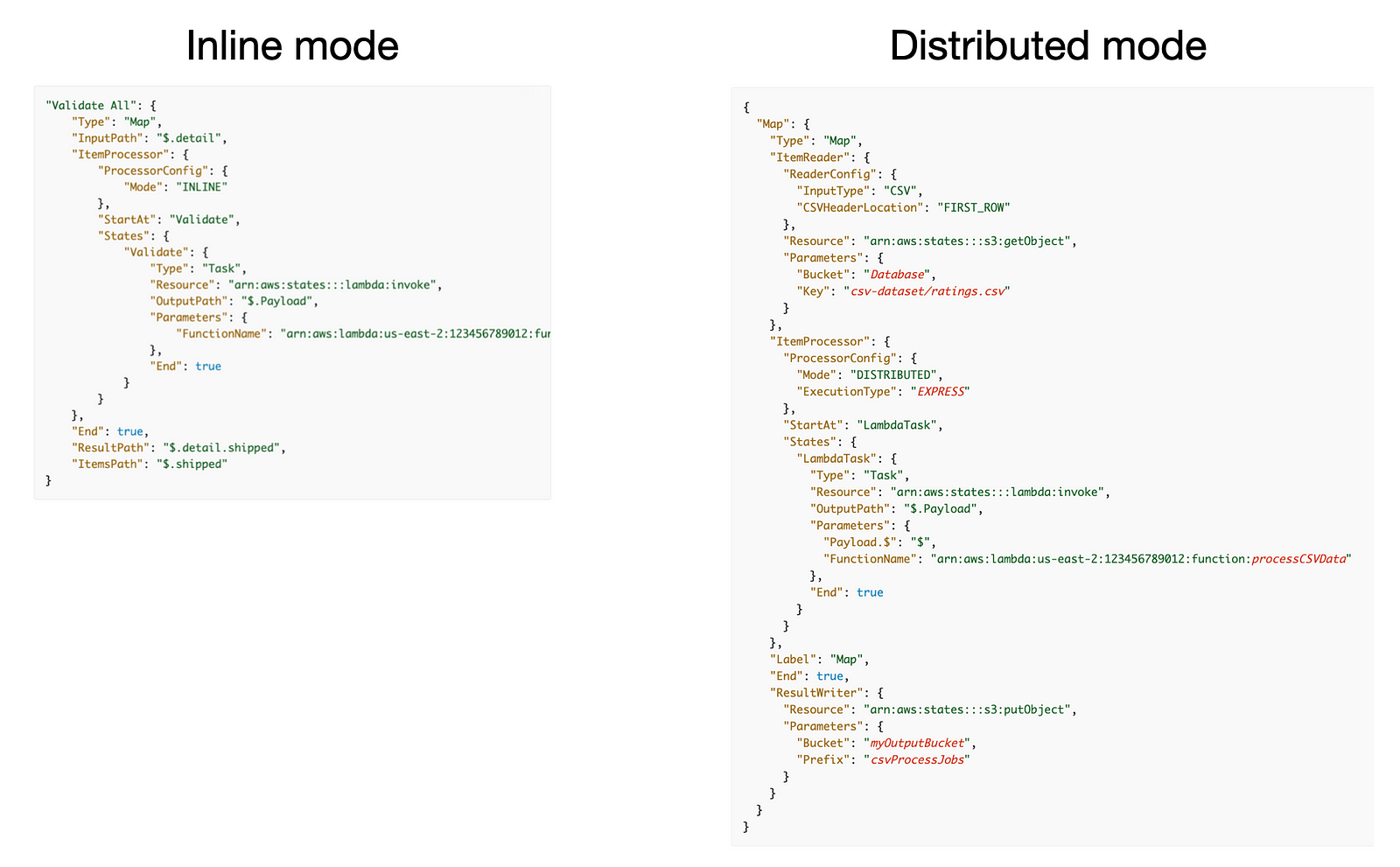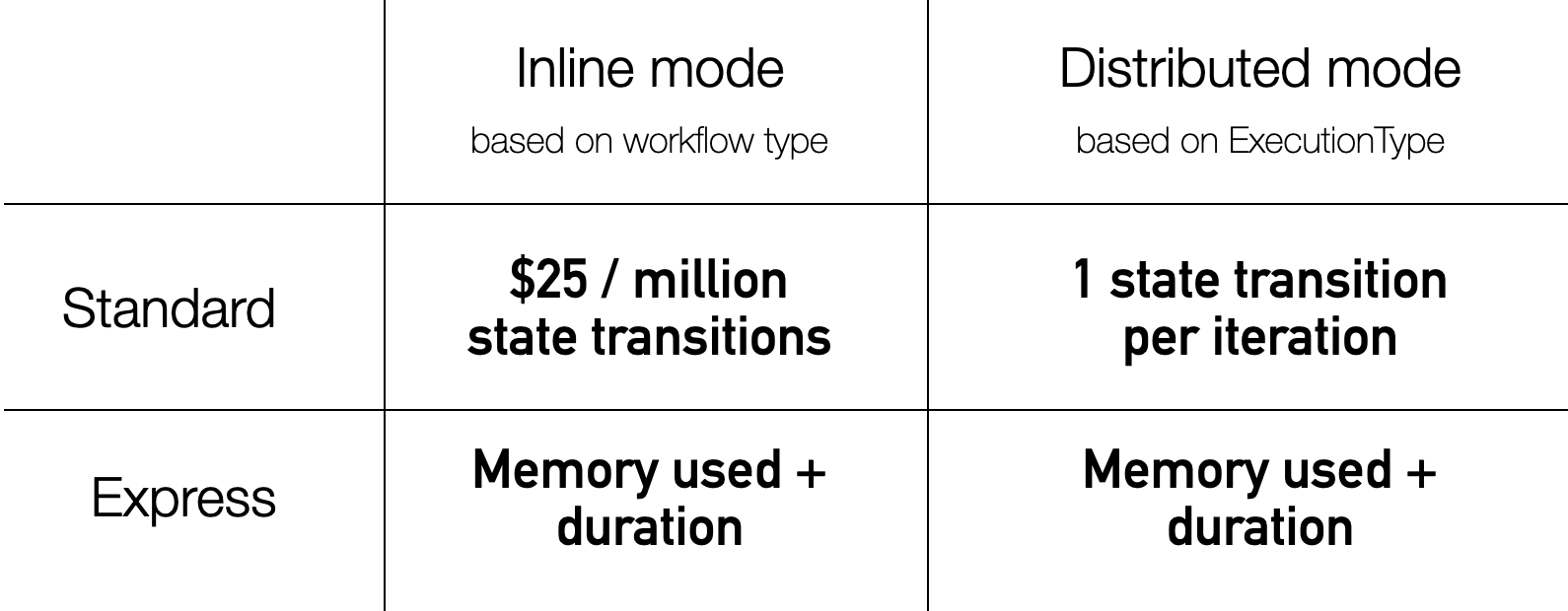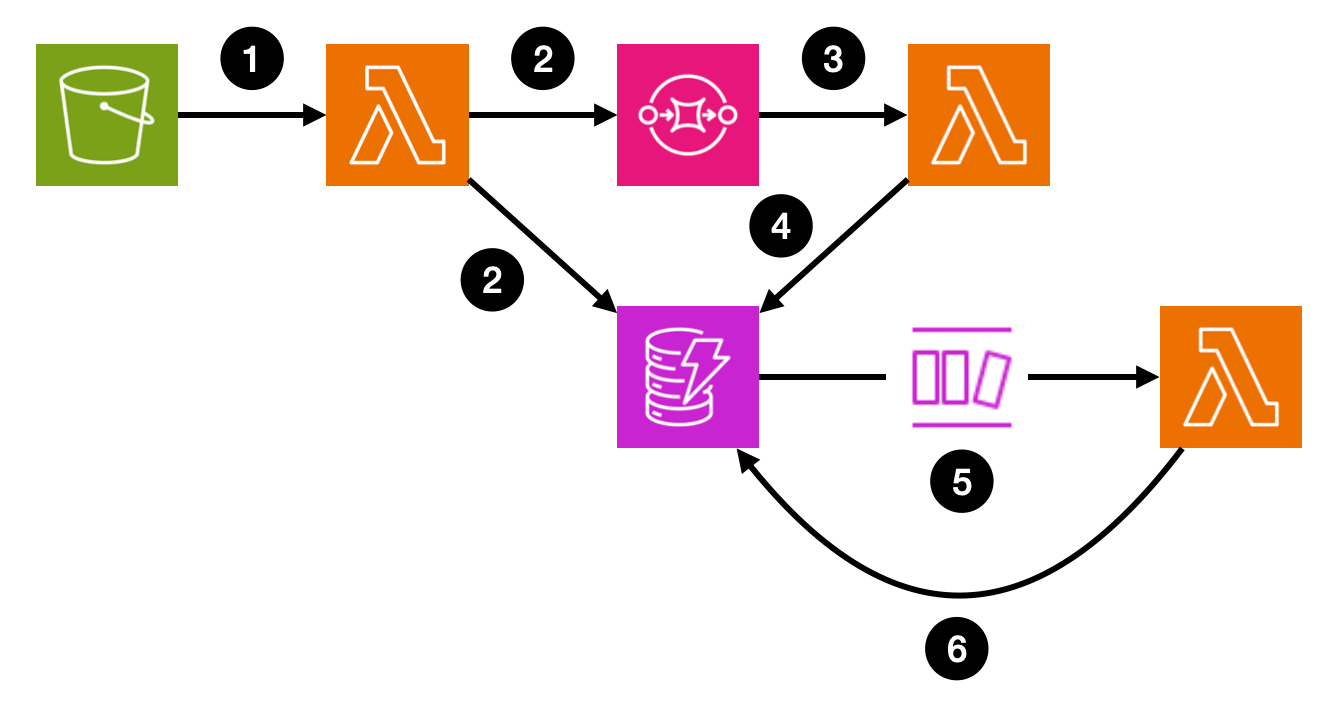What's the best way to implement Fan-out/Fan-in serverlessly in 2024?
|
Back in 2018, I shared [1] several ways to implement fan-out/fan-in with Lambda. A lot has changed since, so let’s explore the solution space in 2024. Remember, what’s “best” depends on your context. I will do my best to outline the trade-offs you should consider. Also, I will only consider AWS services in this post. But there is a wealth of OpenSource/3rd-party services that you can use too, such as Restate. If you’re not sure whether you need fan-out/fan-in or map-reduce, then you should my previous post first [2]. I explained the difference between the two and when to use which. Ok, let’s go! Step FunctionsFan-out has always been easy on AWS. You can use SQS to distribute tasks across many workers for parallel processing. But fan-in makes you work! You need to keep track of the individual results so you can act on them when all the results are in. Luckily for us, Step Function has productized the fan-out/fan-in pattern with its You provide an input array and specify how to process each item in the array. The
You can take this output array as input to another Importantly, the
With these two modes, you can use the The main consideration here is the ease of configuration and cost. Ease of configuration
The
In addition, you have to decide what This is an important decision. Each iteration of the map state is executed as a child workflow. The Standard workflows can run for up to a year. But an express workflow can only run for five minutes. See this article [3] for a more detailed comparison of these two workflow types. Perhaps most importantly, this decision affects how the iterations are charged. CostIn The Express Workflows are priced exactly as before. However, Standard Workflows are priced as one state transition per iteration. That is, even if an iteration executes 10 state transitions, they are priced as one state transition.
With this in mind, the Step Functions cost for processing large input arrays will not be astronomical. However, you also need to take into account other associated costs, such as the cost of Lambda invocations. If you need to process a large array of inputs, consider processing them in batches. SummaryStep Function’s It can handle workloads at any scale. Even if you need to fan out to millions of tasks, the distributed map state can offer a cost-effective solution. If you want a balanced solution that offers good developer productivity and cost efficiency, you should choose Step Functions. But if cost is your primary concern, maybe because you need to produce millions of tasks frequently, then you should implement a custom solution. Custom build solutionsHere’s a common pattern for building a custom fan-out/fan-in solution:
This is likely a more cost-efficient solution than Step Functions. There are built-in batching for the SQS and DynamoDB stream functions, courtesy of Lambda’s EventSourceMapping. So the Lambda-related processing costs will be lower. Furthermore, here is a rough estimate for other costs (assuming one million items):
As you can see, these estimated costs are much lower than those for Step Functions. However, this solution has many moving parts, and you have to own the uptime. If you frequently process millions of items then a custom solution like this can make sense. SummaryWhen choosing a solution, it’s not just about finding the cheapest option. It’s about getting the most value for your investment. Remember, you get what you paid for. Think of it like buying tools for a job. You don’t always buy the cheapest tools because they might not last. But you also don’t need the most expensive ones if they offer more than you need. You aim for the right balance — reliable enough to get the job done efficiently without overspending. In the same way, when building your serverless architecture, choose the solution that offers the best trade-off between cost, complexity, and capability for your specific needs. Links[1] How to do fan-out and fan-in with AWS Lambda [2] Do you know your Fan-Out/Fan-In from Map-Reduce? |
Master Serverless
Join 14K readers and level up you AWS game with just 5 mins a week. Every Monday, I share practical tips, tutorials and best practices for building serverless architectures on AWS.
2024 was the year I got back and amongst the community, and it felt great to be back! Blog I published 33 new blog posts. As a whole, my blog garnered 353k views from 255k visitors. About half of them came through Google search. This is down from 2023... but the decline is offset by more people reading my content through my newsletter nowadays. Most read blog posts: Hit the 6MB Lambda payload limit? Here’s what you can do When to use Step Functions vs. doing it all in a Lambda function How to...
One of my favourite questions from the November cohort of Production-Ready Serverless [1] is, "How do you handle e2e tests involving multiple services across bounded contexts?" In a microservices environment, testing user journeys that span across multiple bounded contexts requires collaboration and a clear delineation of responsibilities. Depending on how your organisation is structured, different teams are responsible for testing parts or the entirety of the user journey. For example... The...
The ability to invalidate a user's session with immediate effect is a common enterprise requirement. For example: If a user's credentials are compromised, we need to immediately revoke the user's access and force the user to change credentials. If an employee is terminated or an external contractor's access is revoked, their session should be invalidated immediately to prevent misuse. Many regulations mandate strict access controls and the ability to prevent unauthorized access in real time....




